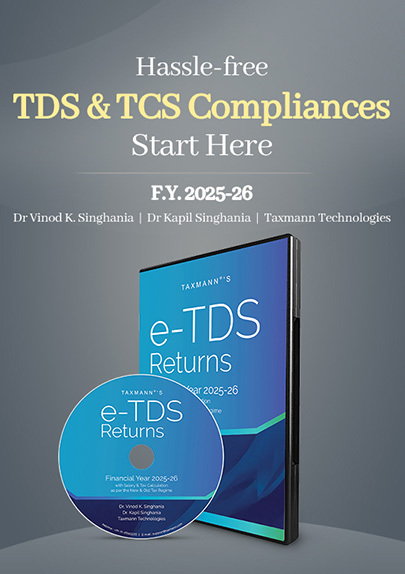Offence Under Section 276CC Committed as Soon as There Is Failure on Part of Assessee in Filing ITR Within Due Date | SC
- Blog|News|Income Tax|
- 2 Min Read
- By Taxmann
- |
- Last Updated on 17 February, 2025

Case Details: Vinubhai Mohanlal Dobaria v. Chief Commissioner of Income-tax - [2025] 171 taxmann.com 268 (SC)
Judiciary and Counsel Details
- J.B. Pardiwala & Sanjay Karol, JJ.
Facts of the Case
The assessee filed the return of income for assessment year 2011-12 after the due date. Subsequently, the Commissioner issued a show cause notice alleging violation under section 276CC. The notice stated that although the due date for filing the income tax return was 1-8-2011, the assessee had filed the same with a delay on 4-3-2013.
The assessee replied to the aforesaid show cause notice along with the application for compounding. Later, the assessee filed return of income for assessment year 2013-14, which was also filed after the due date. Consequently, he received another show cause notice as regards the launching of prosecution.
The Commissioner rejected the compounding application of the assessee on the ground that the offence committed by the assessee would not be covered by the expression “first offence” as defined in the 2014 guidelines.
The matter reached the Supreme Court.
Supreme Court Held
The Supreme Court held that after discussing the various methods of statutory interpretation, took the view that the legislative intent behind section 276CC, undoubtedly, was to restrict the meaning of the expression ”in due time” used in the said provision to the time period referred to in section 139(1) and not to the time period referred to in section 139(4).
The Supreme Court observed that by virtue of section 278E, the trial court has to presume the existence of a culpable mental state, and it would be open to the accused to plead the absence of the same in his defence. What is discernable from the decision is that an offence under section 276CC could be said to have been committed as soon as there is a failure on the part of the assessee in furnishing the return of income within the due time as prescribed under section 139(1).
Filing the return of income later within the time limit under Section 139(4) or before the initiation of prosecution does not change the fact that an offence under Section 276CC occurs on the day immediately after the due date for filing the return.
List of Cases Reviewed
- Vinubhai Mohanlal Dobaria v. Chief Commissioner of Income-tax [2017] 81 taxmann.com 60 (Gujarat)/[2017] 247 Taxman 253 (Gujarat) [para 82] reversed.
- Prakash Nath Khanna v. CIT (2004) 9 SCC 686 [para 44] followed.
List of Cases Referred to
- Prakash Nath Khanna v. CIT (2004) 9 SCC 686 (para 34)
- Y.P. Chawla v. M.P. Tiwari (1992) 2 SCC 672 (para 52).
Disclaimer: The content/information published on the website is only for general information of the user and shall not be construed as legal advice. While the Taxmann has exercised reasonable efforts to ensure the veracity of information/content published, Taxmann shall be under no liability in any manner whatsoever for incorrect information, if any.

Taxmann Publications has a dedicated in-house Research & Editorial Team. This team consists of a team of Chartered Accountants, Company Secretaries, and Lawyers. This team works under the guidance and supervision of editor-in-chief Mr Rakesh Bhargava.
The Research and Editorial Team is responsible for developing reliable and accurate content for the readers. The team follows the six-sigma approach to achieve the benchmark of zero error in its publications and research platforms. The team ensures that the following publication guidelines are thoroughly followed while developing the content:
- The statutory material is obtained only from the authorized and reliable sources
- All the latest developments in the judicial and legislative fields are covered
- Prepare the analytical write-ups on current, controversial, and important issues to help the readers to understand the concept and its implications
- Every content published by Taxmann is complete, accurate and lucid
- All evidence-based statements are supported with proper reference to Section, Circular No., Notification No. or citations
- The golden rules of grammar, style and consistency are thoroughly followed
- Font and size that’s easy to read and remain consistent across all imprint and digital publications are applied



 CA | CS | CMA
CA | CS | CMA
